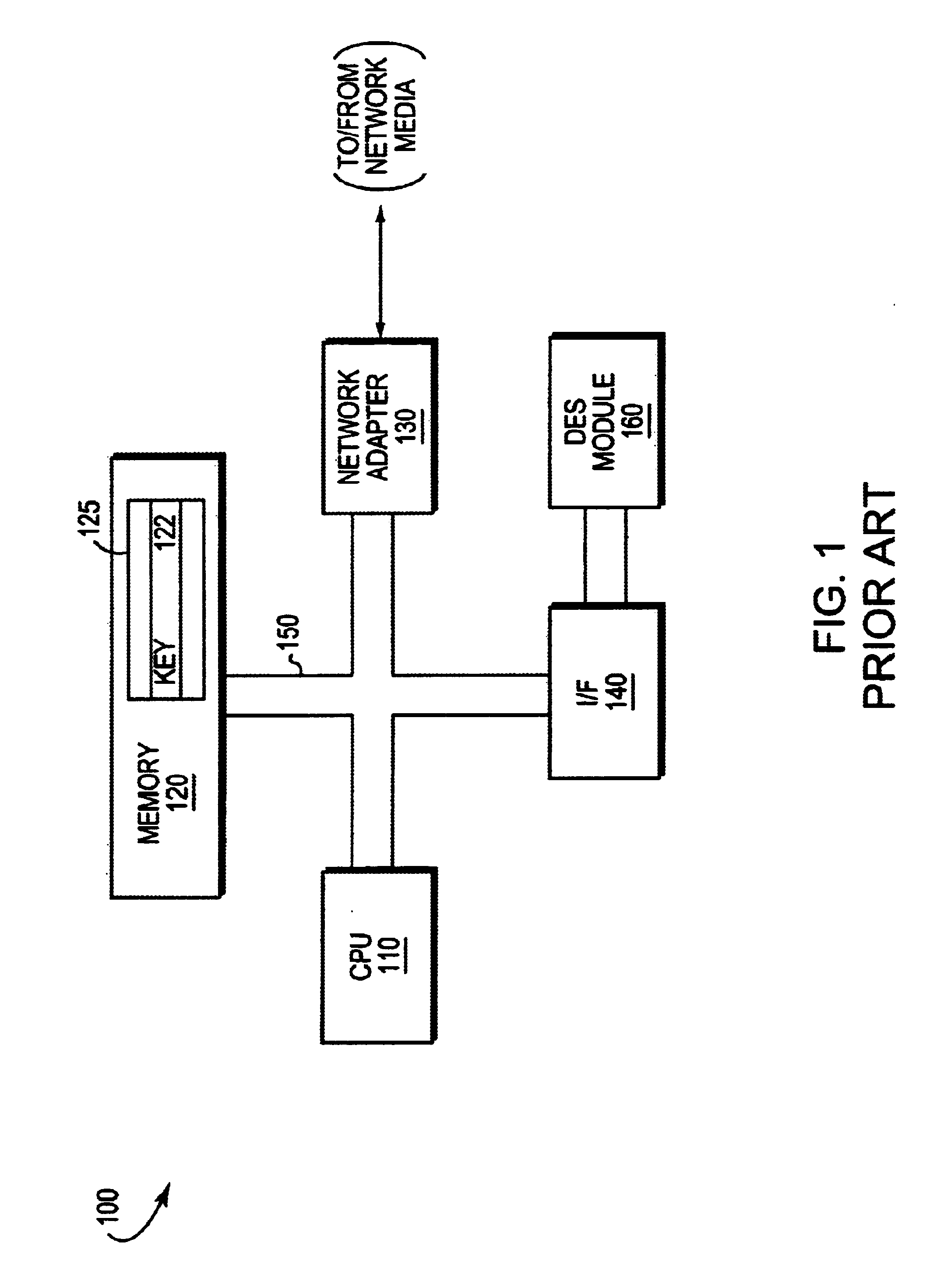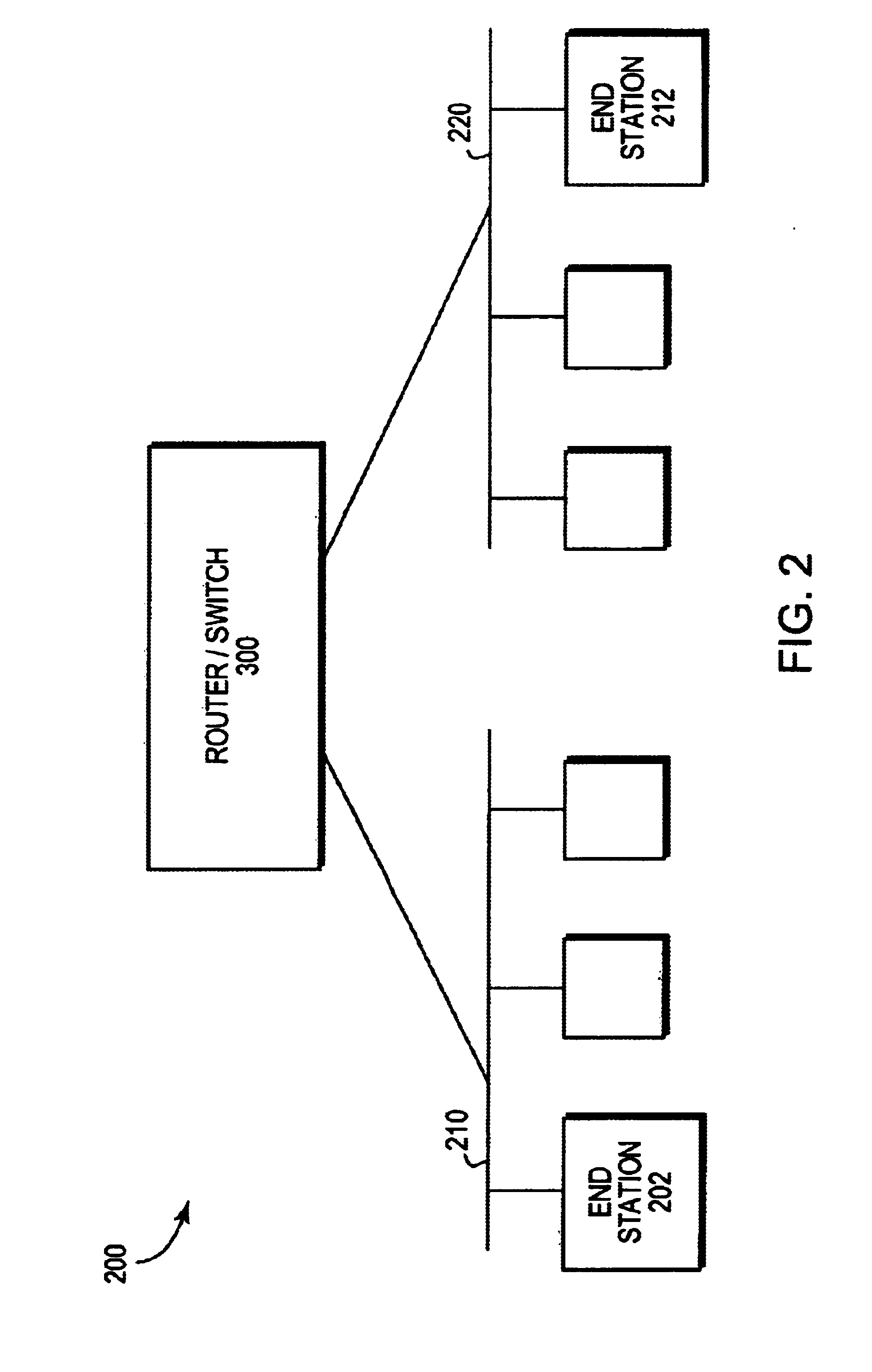Tightly coupled software protocol decode with hardware data encryption
a hardware data encryption and software protocol technology, applied in the field of data encryption, can solve the problems of reducing the overall performance of the switch, affecting performance, and reducing performance, so as to reduce the latency of encryption setup, and efficiently cooperate with other resources of the processor
- Summary
- Abstract
- Description
- Claims
- Application Information
AI Technical Summary
Benefits of technology
Problems solved by technology
Method used
Image
Examples
Embodiment Construction
[0028]FIG. 2 is a block diagram of a computer network 200 comprising a collection of interconnected communication media and subnetworks attached to a plurality of stations. The stations are typically computers comprising end stations 202, 212 and intermediate station 300. The intermediate station 300 may be a router or a network switch, whereas the end stations 202, 212 may include personal computers or workstations. The subnetworks generally comprise local area networks (LANs) 210 and 220, although the invention may work advantageously with other communication media configurations such as point-to-point network links. Communication among the stations of the network is typically effected by exchanging discrete data packets or frames between the communicating nodes according to a predefined protocol. For the illustrative embodiment described herein, the predefined protocol is the Internet protocol (IP), although the invention could be implemented with other protocols, such as the Int...
PUM
 Login to View More
Login to View More Abstract
Description
Claims
Application Information
 Login to View More
Login to View More - R&D
- Intellectual Property
- Life Sciences
- Materials
- Tech Scout
- Unparalleled Data Quality
- Higher Quality Content
- 60% Fewer Hallucinations
Browse by: Latest US Patents, China's latest patents, Technical Efficacy Thesaurus, Application Domain, Technology Topic, Popular Technical Reports.
© 2025 PatSnap. All rights reserved.Legal|Privacy policy|Modern Slavery Act Transparency Statement|Sitemap|About US| Contact US: help@patsnap.com



